William Davis's Blog: Dr. Davis Infinite Health Blog, page 99
October 13, 2016
The Wheat Belly Retreat is in 2 weeks!

The Wheat Belly Retreat at the beautiful Loew’s Ventana Resort in Tucson, Arizona starts in just 2 weeks: October 27th-30th, 2016. If you are procrastinating and haven’t yet signed up (and arranged flights, etc.), NOW is the time to do it!
At the retreat, we will discuss all things Wheat Belly from start to finish, host cooking demonstrations and fireside chats, all in an incredible and lush desert setting with hotel room and many meals provided. Dr. William Davis will personally host most of the retreat with additional sessions provided by several others, including head chef Ken Harvey who will provide cooking demonstrations that adhere to the Wheat Belly lifestyle.
Included will be discussions built around the Wheat Belly Total Health book that shows readers how to reverse numerous health conditions. We will also present the Wheat Belly 10-Day Grain Detox program to help any newcomers to this lifestyle get started as quickly and confidently as possible, or to jump-start your program if you have drifted off.
For more information about the program and the resort, go here and/or sign up for updates on the retreat here.


The post The Wheat Belly Retreat is in 2 weeks! appeared first on Dr. William Davis.
October 11, 2016
Are you using the right oils?
Let me begin by stating this simple fact:
We all need fats and oils in our diet. – Tweet this!
We should not be trying to cut back or eliminate the fats or oils. Contrary to the blundering health advice of the last half-century, fats and oils do not make you fat; they help you lose weight. Fats and oils do not trigger insulin, the hormone of weight gain, nor do they increase the risk for cardiovascular disease. They generate satiety, leaving you feeling full and satisfied.
It is important that you choose your oils wisely.
Oils that were previously thought to be unhealthy, such as coconut oil and palm oil, due to their saturated fat content, are now making a glorious return to a healthy diet. One more thing: don’t trim the fat off of poultry, beef, pork, or fish. Don’t skim the gelatin and fat off of your soup or stock, even when using fats like lard and tallow in your cooking.
Here are the best oils to choose from. – Tweet this!

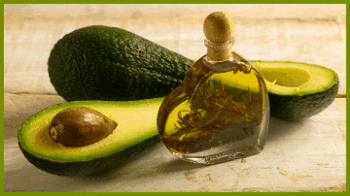
It is not necessary to purchase all of these healthy oils. You will find that just keeping a supply of coconut and extra-virgin olive oil on hand will meet most of your cooking needs.
 Consider adding healthy fats and oils at every meal opportunity. –Tweet this!
Consider adding healthy fats and oils at every meal opportunity. –Tweet this!
Whipping melted coconut oil or butter into coffee
Adding extra-virgin olive oil to scrambled or fried eggs
Using melted coconut oil or avocado oil in your smoothie or shake
Make your own salad dressings
 A list of oils you should avoid or minimize the use of. – Tweet this!
A list of oils you should avoid or minimize the use of. – Tweet this!
Corn oil (which also contains residues of grain proteins)
Vegetable oil
Safflower oil
Sunflower oil
Grapeseed oil
Soybean oil
These oils tend to weigh the diet too heavily with omega-6 oils. Even though omega-6s are among the essential oils, large quantities of them are unhealthy.
Yours in grainless health,
Dr. William Davis
PS: Deepen your understanding of grain-free living AND give yourself the tools you need to succeed. How about a 4 Star retreat? The Wheat Belly Lifestyle Retreat is a luxurious program designed to do just that!
The post Are you using the right oils? appeared first on Dr. William Davis.
October 9, 2016
What’s wrong with that banana?

Once you’ve eliminated the ugliest, smelliest, rottenest, most foul carbohydrate of all, wheat, why do we restrict other carbohydrates in the diet on the Wheat Belly lifestyle?
Wheat Belly, of course, exposes the disastrous effects of widespread consumption of this genetically-altered grain. Remove all modern wheat from the diet and weight plummets, blood sugar drops, arthritis reverses in many people, chronic sinus infections improve, asthma improves, acid reflux disappears, cramps and diarrhea of irritable bowel syndrome are gone . . . on and on.
So why bother to limit carbohydrates after wheat?
Because the overwhelming likelihood is that, if you live in the U.S., Canada, Australia, or Western Europe, you are diabetic, pre-diabetic, or what I call pre-pre-diabetic. That includes just about everybody. Only rare exceptions fall outside of this group . . . and they are mostly slender, pre-menopausal females who exercise at high levels.
This situation results from a lifetime of excessive carbohydrate consumption, wheat and otherwise. It leaves us with high blood sugars and HbA1cs (long-term blood sugar), small LDL particles, high triglycerides, and fatty livers. It also leaves us with beaten-up, tired pancreases that have reduced numbers of functioning, intact beta cells that produce insulin. It means the vast majority of us are heading straight for full-blown diabetes and a need for insulin injections. Surely you’ve seen the headlines: 1 in 2 Americans expected to be diabetic; 336 million diabetics worldwide. This is not the exception; it’s the rule.
The drug industry, of course, celebrates diabetes, since the diabetes drug market is enjoying double-digit annual growth. The American Diabetes Association advocates a high-carbohydrate diet even though they recently acknowledged that sugar and carbs are responsible for raising blood sugars. And the Board Members of wheat trade groups have very close ties to the pharmaceutical industry.
I limit carbohydrates because your burned-out, tired, overworked pancreas has limited life left before it poops out and you become diabetic. For many of us, all it takes is an apple or a banana (when ripe; recall that we use green, unripe bananas for their prebiotic fiber content) and we have diabetic or near-diabetic range sugars.
But there’s more to it than that. Ask John Q. Primary Care doctor and he or she will tell you that, if your after-eating blood sugar is 200 mg/dl or less, you don’t “need” insulin or diabetes medications and you’re okay. Is that true?
No, it is the farthest thing from the truth. The truth of it is that any blood glucose of 90 mg/dl or more triggers glycation. (See the Dowager’s Hump chapter in Wheat Belly.) A blood glucose, say, of 153 mg/dl that results after a bowl of organic, stone ground oatmeal triggers accelerated glycation of the proteins in:
the lenses of your eyes–cataracts
the cartilage cells of your joints–brittle cartilage, then arthritis
the cells lining your arteries–atherosclerosis. Small LDL particles triggered by grain/sugar consumption are also extremely glycation-prone.
the cells of skin–wrinkles and age spots
We live in The Age of Carbohydrate Excess, thanks to the revenue-seeking practices of Big Food seeking high markup foods (how else can you convert $0.25 worth of wheat flour, cornstarch, high-fructose corn syrup, sugar, and food coloring into a $3.99 product, complete with sports figure, cartoon character, or “heart healthy” claim?) and to the misguided advice of “official” agencies all advising us to eat more “healthy whole grains.” Elimination of wheat followed by limiting other carbohydrates allows us to enjoy more time as non-diabetics and non-pre-diabetics with better eyesight, healthier joints, fewer heart attacks, and smoother skin.
The post What’s wrong with that banana? appeared first on Dr. William Davis.
October 5, 2016
The Wheat Belly Cruise 2016
The Wheat Belly Caribbean Cruise for 2016 sets sail December 4th through 11th. The time to sign up is now!
The cruise includes some glorious Caribbean ports of call, including St. Thomas and St. Maarten. Here is a photo of St. Thomas:

There is no shortage of unique eating opportunities here with numerous specialty restaurants. I found the chefs and waitstaff on the Celebrity Silhouette exceptionally accommodating to our dietary needs. This ship is a floating city with numerous swimming pools, walking track, huge exercise facility, cafes, bars, and plenty of other activities.
The 2015 Wheat Belly Cruise was a blast and 2016 should also be a lot of fun with plenty of head-on Wheat Belly discussions. For 2016, we are going to conduct a similar program to the 2015 cruise that runs through the history of wheat and grain consumption a la Wheat Belly, the original book; the Wheat Belly Total Health concepts that maximize your chances of reversing numerous health conditions and achieving the weight loss you desire; and Wheat Belly 10-Day Grain Detox to show you the ABCs of following this lifestyle as quickly and assuredly as possible. We are going to add cooking demonstrations and other unique content not covered last year.
In 2015, Wheat Belly Facebook regular, Betty (Elizabeth) Klub, fearlessly rode the zip-line over the ocean: There’ll be plenty more opportunity for fun and excitement on this coming cruise!
There’ll be plenty more opportunity for fun and excitement on this coming cruise!
The post The Wheat Belly Cruise 2016 appeared first on Dr. William Davis.
October 4, 2016
What’s All the Hype About Fermentation?
Before there was refrigeration, there was fermentation. This was how our great grandparents managed to pick radishes, cucumbers, or asparagus in summer and then consume them throughout fall and winter. They’ve allowed foods to ferment, which is the process of degradation by bacteria and fungi. If you eat kosher pickles, prosciutto, salami, and yogurt, you are already consuming fermented foods, whether you know it or not.
Fermentation: The old way for humans to store food for more than a few days after picking or harvesting. – Tweet this!
Fermented foods are a source for lactate-fermenting organisms such as Lactobacillus and Bifidobacterium. Lactic acid reduces pH and kills dangerous organisms. There is a wonderful intersection between lactic acid fermentation and human health, as the bacteria contained in fermented foods are also among the species that have been found to exert the greatest health benefits in humans, such as
Reductions in LDL cholesterol,
Improved intestinal health, and
Weight control.
The number of bacteria contained within the fermented food varies widely depending on:
What food it is, how long fermentation was allowed to proceed,
The ambient temperature,
The availability of other nutrients such as amino acids and fatty acids, and
Other factors
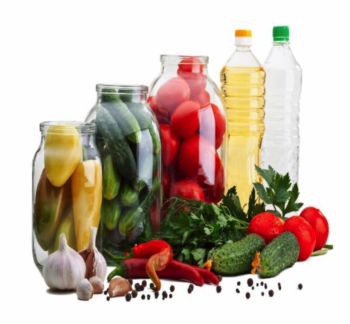
The number of bacteria range from trivial (as in most commercial yogurts and kefirs) to substantial (as in naturally fermented dairy products: kimchi fermented, sauerkraut not in a can and unheated-not the stuff sold in grocery stores that is pickled in vinegar rather than fermented).
Cheese and cottage cheese do not provide substantial probiotic bacteria, as the whey fraction that is removed after fermentation contains much of the bacterial content.
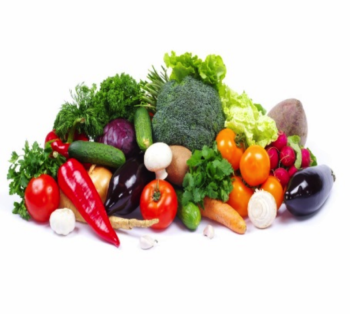
Just about any fruit or vegetable can be subjected to fermentation. – Tweet this!
Some other sources include:
Kombucha (a fermented tea)
Takuan (Japanese fermented daikon radish)
Natto (fermented soybeans that are exceptionally rich in vitamin K2)
Garum (fermented fish sauce).
While fermented foods cannot replace a high-potency probiotic (especially if the probiotic contains a large variety of bacterial strains) they can be very helpful for maintaining healthy flora and bowel health over the long term. There are some foods that you can easily make in your own home, thereby avoiding all the nasty and unnecessary ingredients used by food manufacturers and saving lots of money.
If you aren’t up for making your own fermented foods, which is exceptionally easy and satisfying, look for fermented foods in the refrigerated section of health food stores or supermarkets. The label will usually say “contains live cultures” or something similar.
Avoid canned or bottled fermented foods, as the canning or bottling process kills the bacteria. – Tweet this!
Yours in grainless health,
Dr. William Davis
The post What’s All the Hype About Fermentation? appeared first on Dr. William Davis.
September 24, 2016
Type 2 diabetes: a temporary condition

For the majority of people, type 2 diabetes and pre-diabetes are entirely reversible temporary conditions. Normal blood sugar, normal HbA1c (a reflection of the prior 90 days of blood sugar), and freedom from insulin and diabetes drugs are just a few steps away. But don’t count on most doctors or dietitians to tell you this. You should certainly not trust an endocrinologist, diabetologist, or diabetes educator, nearly all of whom advocate the ridiculous diet of the American Diabetes Association.
The occasional exceptions to the temporary nature of type 2 diabetes apply to people who have damaged too many beta cells in the pancreas that produce insulin, since the pancreas does not recover easily from injury incurred from longstanding high blood sugars (glucotoxicity) and high triglyceride levels (lipotoxicity). Some of these people have been labeled “insulin-dependent,” or latent autoimmune diabetes of adults (LADA), or even type 1 diabetes. (Recall that many type 1 diabetics became that way due to the autoimmune process initiated by the gliadin protein of wheat and related grains, also.) But these situations apply to only around 5% of adult diabetics. The other 95% can choose to NOT have type 2 diabetes or at least minimize its expression to levels below that requiring medication.
Jeanette shared her experience reversing type 2 diabetes by following the Wheat Belly lifestyle:
“Got scolded by my doc today for spending time telling him how much better I feel since starting the Wheat Belly lifestyle.
“He was in a hurry and wanted to focus on finding something new wrong with me because I have a 20 year history of insulin-dependent diabetes. I guess it’s hard for him to believe that someone could actually reverse diabetes after so many years.
“One hour post meal today:”

Yes, Jeanette’s doctor was upset because she managed to reverse a condition that he helped cause, she rejected the medications he advised, all by doing the opposite of what he’d been advising for years. Jeanette eats foods that do not raise blood sugar—no wheat, no grains, no sugars–while choosing healthy foods such as eggs, meats, green veggies, and lots of healthy fats like that in pork, beef, organic butter, and coconut oil. This way, even a 1-hour post-meal blood sugar remains normal, as Jeanette proudly shows on her glucometer.
It’s not entirely Jeanette’s doctor’s fault, of course. Modern life conspires to create this epidemic of type 2 diabetes: awful dietary advice, proliferation of sugary soft drinks and junk carbs like chips, dysbiosis from intermittent antibiotic exposure and chlorinated drinking water, lack of vitamin D from indoor lifestyles, lack of sleep, stressful sedentary work, etc. Throw in the huge profit opportunity that makes the diabetes drug industry a multi-billion dollar business growing by double-digits every year, generous incentives given to doctors to prescribe the drugs, the constant onslaught of direct-to-consumer ads showing life as beautiful and carefree on diabetes drugs, consensus treatment guidelines crafted by “experts” on the payroll of Big Pharma and you’ve got the formula for a worldwide diabetic disaster . . . but one you can choose to opt out of.
It is therefore important to address all Wheat Belly strategies in order to maximize the restoration of your body’s sensitivity to insulin. Every strategy articulated in Wheat Belly Total Health and the Wheat Belly 10-Day Grain Detox books play a role in restoring the body’s insulin sensitivity and reversing type 2 diabetes, especially vitamin D, omega-3 fatty acids from fish oil, and cultivation of bowel flora. Don’t let modern life and awful conventional dietary advice resign you to a life of being overweight with diabetes and reliance on expensive medications while shaving 8 years off your life. Look at type 2 diabetes as a temporary condition, one that you can reverse with just a few key strategies.
Did you notice that Jeanette’s facial swelling has reversed, complete with larger eyes? This is all part of the wonderful reversal of body-wide inflammation that occurs in people following the Wheat Belly lifestyle.
The post Type 2 diabetes: a temporary condition appeared first on Dr. William Davis.
September 19, 2016
When is the next Wheat Belly 10-Day Grain Detox Challenge?

The next Wheat Belly 10-Day Grain Detox Challenge is scheduled to start Wednesday, September 28th, 2016!
Through my New York Times bestseller Wheat Belly, millions of people learned how to reverse years of chronic health problems by removing wheat from their daily diets. Now, I have created an easy and accessible 10-Day Detox Program.
The “Wheat Belly 10-Day Grain Detox” supplies you with carefully designed meal plans and delicious recipes to fully eliminate wheat and related grains in the shortest time possible. Perfect for those who may have fallen off the gluten-free wagon or for newcomers who need a jump-start to weight loss, this new addition to the Wheat Belly phenomenon guides you through the complete 10-Day Detox experience.
In addition to the brand-new quick-start program, I’ll teach you
How to recognize and reduce wheat-withdrawal symptoms,
How to avoid common landmines that can sabotage success
How to use nutritional supplements to further advance weight loss and health benefits.
The “Wheat Belly 10-Day Grain Detox” also includes
Inspiring testimonials from people who have completed the program (and have now made gluten-free eating a way of life)
Exciting new recipes to help get your entire family on board.
To join the Detox Challenge 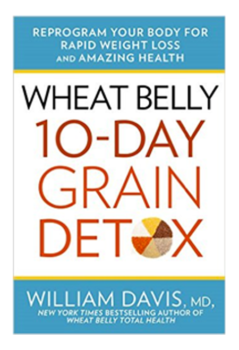
Step 1
Get the book. And read it (at least the first 5 chapters). Detox Challenge participants should be informed and active in order to get the most out of the challenge and private Facebook group.
Amazon: http://amzn.to/1JqzMea
Barnes & Noble: http://bit.ly/wheatbelly10daygraindetox-bn
Indiebound: http://bit.ly/1KwcFTQ
Step 2
Come join the Private Facebook Group.
http://bit.ly/WheatBelly-PrivateFBGroup
Step 3
Head back to the Private Facebook Group starting Septemb er 27th (the day before the official start of the Challenge) and onwards for tips, video, and discussions to help you get through your detox and reprogram your body for rapid weight loss. Dr. Davis will be posting video instructions and answers to your questions.
Need support? Lapsed and want to get back on board?
Join the thousands of people who are losing weight and regaining health by following the Wheat Belly 10-Day Grain Detox. Join us if you desire support through the sometimes unpleasant process of wheat/grain detoxification and withdrawal or if you are among those who previously followed the program but lapsed, and now want to get back on board as confidently as possible, this Detox Challenge was made for you.
Yours in grainless health,
Dr. William Davis
The post When is the next Wheat Belly 10-Day Grain Detox Challenge? appeared first on Dr. William Davis.
The Gluten-Free Gimmick
Don’t be fooled by the marketing.
Just because it’s on the shelf at Whole Foods Market doesn’t mean it’s good for you! – Tweet this.
I would like to begin by clearly stating that people with celiac disease or gluten sensitivity need to meticulously avoid all gluten sources, but they do not need gluten-free junk carbohydrate ingredients in their place. This is the sort of self-destructive thinking encouraged by the gluten-free food industry. This industry makes billions by filling grocery stores with overpriced junk carbohydrates.
Don’t replace one problem with another. Removing gluten but replacing it with excessive carbohydrate intake is causing diabetes, dementia, high blood pressure, obesity (need I go on?) to soar.
In Wheat Belly Total Health, I discussed the need to avoid gluten-free foods made with “junk carb” ingredients like cornstarch, potato flour, tapioca starch, and rice flour. This bears repeating, because so many people continue to hear the Wheat Belly message as a “gluten-free” message.
The Wheat Belly lifestyle means living a healthy grain-free life, not just going gluten-free. – Tweet this!
The majority of gluten-free foods sold in stores pack on the pounds and impair your ability to lose weight. Just because they lack gluten does not make them healthy.
 CORN STARCH, RICE FLOUR, TAPIOCA STARCH, OR POTATO FLOUR. These are the four ingredients most commonly used in gluten-free processed foods. They are awful for health and will completely shut down any hope of weight loss, often resulting in outright, sometimes outrageous, weight gain, inflammation.
CORN STARCH, RICE FLOUR, TAPIOCA STARCH, OR POTATO FLOUR. These are the four ingredients most commonly used in gluten-free processed foods. They are awful for health and will completely shut down any hope of weight loss, often resulting in outright, sometimes outrageous, weight gain, inflammation.
Managing carbohydrates to improve control over metabolism and health means 100 percent avoidance of these terrible products marketed to an unsuspecting public believing they are eating healthy by avoiding gluten. Nothing raises blood sugar higher than the gluten-free junk carbohydrates in gluten-free multigrain bread, crackers or gluten-free pasta — higher than even table sugar. Blood sugar that results from eating two slices of whole grain gluten-free bread made with potato flour, rice flour, or other unhealthy grains like millet can easily top 180 mg/ dL (in those without diabetes) over the first hour after consumption, regardless of the mayonnaise, meat, cheese, or other foods in the sandwich.
 There are indeed some food producers who have developed gluten-free and grain-free products without junk carb ingredients that do not raise blood sugar and therefore are safe. However, they remain few and far between.
There are indeed some food producers who have developed gluten-free and grain-free products without junk carb ingredients that do not raise blood sugar and therefore are safe. However, they remain few and far between.
This is why I promote Wheat-Free Market products to my community.
Yours in grainless health,
Dr. William Davis
The post The Gluten-Free Gimmick appeared first on Dr. William Davis.
September 13, 2016
Chocolate Orange Whoopies

Here’s a quick and easy recipe for Chocolate Orange Whoopies, a soft cookie-like dessert that combines the citrus-y flavors of orange with rich dark chocolate. I used the Wheat-Free Market Virtue Sweetener, the sweetener that, because it is fourfold sweeter than sugar, can be used sparingly and is less costly than other natural, non-sugar sweeteners like Lakanto or Truvia.
I used a whoopie pan but, if you don’t have one, you can just form 3/4-inch thick, 2 1/2-inch rounds on parchment paper and you will obtain much the same end product.
Makes 12 whoopies
3 cups Wheat-Free Market All-Purpose Baking Mix (or almond flour/meal)
Zest of 1 medium orange (about 1 tablespoon)
2 1/2 tablespoons Virtue Sweetener
1 egg
3/4 cup water
2 teaspoons lemon juice
2 teaspoons orange extract
1 3 1/2-ounce bar of 85-90% cocoa chocolate or 1/2 cup dark chocolate chips
Preheat oven to 350 degrees F. Grease or spray a whoopie pan with oil; alternatively, spread parchment paper over a baking pan.
In large bowl, combine baking mix (or flour/meal) with orange zest and Virtue Sweetener; mix thoroughly.
In small bowl, whisk egg with water, lemon juice, and orange extract. Add egg mixture to dry mixture and combine thoroughly.
Distribute dough into 12 wells of the whoopie pan and flatten to conform to each well. If using parchment paper and pan, flatten dough to cookie shape.
Bake for 22-23 minutes or until toothpick withdraws dry. Remove from oven and allow to cool 10 minutes, then remove from whoopie pan.
Meanwhile, melt chocolate in microwave in 20-second increments or in double-boiler setup. Pipe chocolate onto whoopies in your desired pattern (e.g., as shown in the photograph). (If you lack a piping bag, you can cut the corner off a plastic bag or craft one from wax paper.
The post Chocolate Orange Whoopies appeared first on Dr. William Davis.
Are these prescription drugs preventing your weight loss?
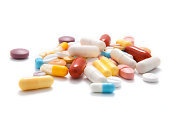
A number of drugs prescribed to treat common conditions, such as hypertension, allergies, depression, inflammation, and diabetes, block your ability to lose weight. Several of these drugs actually cause weight gain, and most doctors fail to inform their patients of such side effects. Among the drugs that block weight loss are:
Beta-blockers : metoprolol, atenolol, carvedilol, and propranolol
Antidepressants: amitriptyline (Elavil), nortriptyline (Pamelor), doxepin, paroxetine (Paxil), trazodone, and others
Steroids: prednisone and hydrocortisone (but not inhaled or nasal steroids for allergies)
Antihistamines: diphenhydramine (Benadryl), fexofenadine (Allegra), cetirizine (Zyrtec), cyproheptadine (Periactin), and others; note that the widely used sleep aid Tylenol PM contains diphenhydramine
Lyrica for fibromyalgia and pain
Valproic acid (Depakote) for seizures
Actos and Avandia for prediabetes and diabetes
Insulin: Injectable insulin can actually be responsible for astounding quantities of weight gain. – Tweet this!
Obviously, attempts to reduce or eliminate these drugs should be undertaken with the cooperation of your health care provider, as most of these drugs should not just be stopped.
Discuss with your doctor how and why you would like to do this. If you encounter resistance or ignorance, or a refusal to discuss or answer your questions, find a health care practitioner who will work with you.
Don’t be surprised, if your doctor denies that these drugs block weight loss or cause weight gain, even though such associations have been demonstrated repeatedly in clinical trials.
Your physician also may not recognize that many of these drugs were unknowingly prescribed to treat the consequences of wheat and grain consumption in the first place.
 Nothing does more to free you from dependence on medications than grain elimination. This simple act can free you from all of the performance-impairing effects of prescription drugs. These include fatigue from antidepressants, mental fog caused by beta-blockers (for hypertension and migraine headaches), sleepiness and helplessness caused by chronic pain medications, and abdominal pain caused by anti-inflammatory drugs. Going grain-free can mean eventually breaking free from prescription medications once and for all.
Nothing does more to free you from dependence on medications than grain elimination. This simple act can free you from all of the performance-impairing effects of prescription drugs. These include fatigue from antidepressants, mental fog caused by beta-blockers (for hypertension and migraine headaches), sleepiness and helplessness caused by chronic pain medications, and abdominal pain caused by anti-inflammatory drugs. Going grain-free can mean eventually breaking free from prescription medications once and for all.
Yours in grainless health,
Dr. William Davis
The post Are these prescription drugs preventing your weight loss? appeared first on Dr. William Davis.
Dr. Davis Infinite Health Blog
Recognize that this i The insights and strategies you can learn about in Dr. Davis' Infinite Health Blog are those that you can put to work to regain magnificent health, slenderness, and youthfulness.
Recognize that this is NOT what your doctor or the healthcare system provides, as they are mostly interested in dispensing pharmaceuticals and procedures to generate revenues. The healthcare INDUSTRY is not concerned with health--you must therefore take the reins yourself.
Dr. Davis focuses on:
--Real, powerful nutritional strategies
--Addresing nutrient deficiencies unique to modern lifestyles
--Deep insights into rebuilding the microbiome disrupted by so many modern factors
Follow Dr. Davis here and on social media and you can witness the extraordinary successes people enjoy on his programs. ...more
- William Davis's profile
- 160 followers



